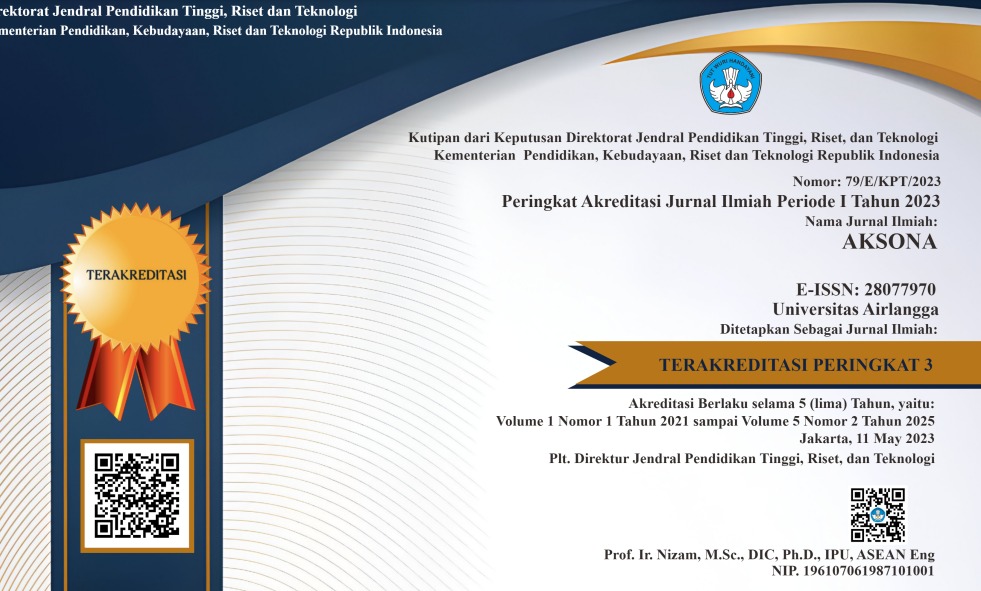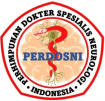Case Series: Gamma Knife Radiosurgery in Brain Arteriovenous, Is It Good Enough?
Downloads
Highlight:
- Brain AVMs are a special concern due to their inherent high risk of bleeding.
- Gamma Knife radiosurgery (GKRS), as one of the modality treatments, is intended to induce progressive occlusion of an AVM by using high-dose targeted radiation
- The result of Gamma Knife radiosurgery (GKRS) can be full obliteration, with complications because adverse radiation effects.
ABSTRACT
Introduction: Brain arteriovenous malformations (AVMs) are relatively uncommon. Gamma Knife radiosurgery (GKRS) is one of the AVM's therapeutic interventions, with both advantages and disadvantages. Here, we report the results of two cases of brain AVM after GKRS.
Cases:
Case 1: Non-contrast head MRI imaging of a 45-year-old man with persistent left-sided headaches revealed a 1.4 x 2.5 x 2.28 cm AVM nidus in the left parasagittal frontal lobe. After a single GKRS with a 25-Gy marginal dose, the MRI contrast showed complete obliteration, with persistent perifocal edema and headache.
Case 2: A 25-year-old woman with a history of generalized seizures. The angiograms revealed an AVM nidus with a diameter of 32.58 mm on her right posterior frontal lobe. After a single GKRS with a 22-Gy marginal dose, the MRI contrast showed full obliteration with large edema. The patient had presented with hemiparesis.
Conclusion: In these cases, the results after GKRS were full obliteration with complications of edema, headache, and hemiparesis. We also found that complications appear to be associated with adverse radiation effects.
Wu EM, El Ahmadieh TY, McDougall CM, Aoun SG, Mehta N, Neeley OJ, Pl, et al. Embolization of brain arteriovenous malformations with intent to cure: a systematic review. J Neurosurg. 2019;132(2):388-99.
Heit JJ, Thakur NH, Iv M, Fischbein NJ, Wintermark M, Dodd RL, et al. Arterial-spin labeling MRI identifies residual cerebral arteriovenous malformation following stereotactic radiosurgery treatment. J Neuroradiol. 2020;47(1):13-9.
Shidoh S, Kobayashi M, Akaji K, Kano T, Tanizaki Y, Mihara B. De Novo Arteriovenous Malformation after Aneurysm Clipping. NMC Case Rep J. 2017;4(3):89-92.
Laakso A, Hernesniemi J. Arteriovenous malformations: epidemiology and clinical presentation. Neurosurg Clin N Am. 2012;23(1):1-6.
Bokhari MR, Bokhari SRA. Arteriovenous Malformation of The Brain. In: StatPearls. Treasure Island (FL): StatPearls Publishing; 2022.
China, M., Vastani, A., Hill, C.S. et al. Gamma Knife radiosurgery for cerebral arteriovenous malformations: a systematic review and meta-analysis. Neurosurg Rev. 2022;45(3):1987–2004.
Starke RM, Kano H, Ding D. Stereotactic radiosurgery for cerebral arteriovenous malformations: evaluation of long-term outcomes in a multicenter cohort. J Neurosurg. 2017;126(1):36–44.
Byun J, Kwon DH, Lee DH, Park W, Park JC, Ahn JS. Radiosurgery for Cerebral Arteriovenous Malformation (AVM): Current Treatment Strategy and Radiosurgical Technique for Large Cerebral AVM. J Korean Neurosurg Soc. 2020;63(4):415-26.
Lv X, Wu Z, Li Y. Arteriovenous Malformation in the Brain: A Theoretical Study Explaining the Behavior of Liquid Embolic Agents during Endovascular Treatment. The Neuroradiology Journal. 2013;26(6):661-68.
Costantino, A., & Vinters, H. V. A pathologic correlate of the "steal” phenomenon in a patient with cerebral arteriovenous malformation. Stroke. 2019;17(1), 103–6.
Ajiboye N, Chalouhi N, Starke RM, Zanaty M, Bell R. Cerebral arteriovenous malformations: evaluation and management. ScientificWorldJournal. 2014;2014:649036
Hasegawa H, Yamamoto M, Shin M, Barfod BE. Gamma Knife Radiosurgery for Brain Vascular Malformations: Current Evidence and Future Tasks. Ther Clin Risk Manag. 2019;15:1351-67.
Derdeyn CP, Zipfel GJ, Albuquerque FC, Cooke DL, Feldmann E, Sheehan JP,et al; American Heart Association Stroke Council. Management of Brain Arteriovenous Malformations: A Scientific Statement for Healthcare Professionals From the American Heart Association/American Stroke Association. Stroke. 2017;48(8):e200-e224.
Arkawazi BMF, Faraj MK, Al-Attar Z, Hussien HAA. Short Term Effectiveness of Gamma Knife Radiosurgery in the Management of Brain Arteriovenous Malformation. Open Access Maced J Med Sci. 2019;7(19):3221-24.
Yen CP, Ding D, Cheng CH, Starke RM, Shaffrey M, Sheehan J. Gamma Knife surgery for incidental cerebral arteriovenous malformations. J Neurosurg. 2014;121(5):1015-21.
Kano H, Flickinger JC, Yang HC. Stereotactic radiosurgery for Spetzler-Martin Grade III arteriovenous malformations. J Neurosurg. 2014;120(4):973–81.
Bir SC, Ambekar S, Maiti TK, Nanda A. Clinical outcome and complications of gamma knife radiosurgery for intracranial arteriovenous malformations. J Clin Neurosci. 2015;22(7):1117-22.
Pollock BE. Gamma Knife Radiosurgery of Arteriovenous Malformations: Long-Term Outcomes and Late Effects. Prog Neurol Surg. 2019;34:238-47.
Ellis JA, Mejia Munne JC, Lavine SD, Meyers PM, Connolly ES Jr, Solomon RA. Arteriovenous malformations and headache. J Clin Neurosci. 2016;23:38-43.
Fokas E, Henzel M, Wittig A, Grund S, Engenhart-Cabillic R. Stereotactic radiosurgery of cerebral arteriovenous malformations: long-term follow-up in 164 patients of a single institution. J Neurol. 2013;260(8):2156–62.
Finitsis S, Bernier V, Buccheit I, Klein O, Bracard S, Zhu F, et al. Late complications of radiosurgery for cerebral arteriovenous malformations: report of 5 cases of chronic encapsulated intracerebral hematomas and review of the literature. Radiat Oncol. 2020;15(1):177.
Copyright (c) 2023 Yohan Budi Hartanto, Debora Sharon Rory, Jesisca Jesisca

This work is licensed under a Creative Commons Attribution-ShareAlike 4.0 International License.





















